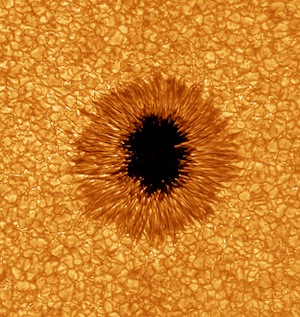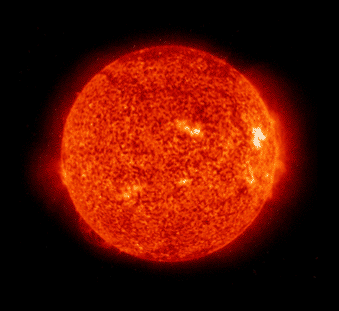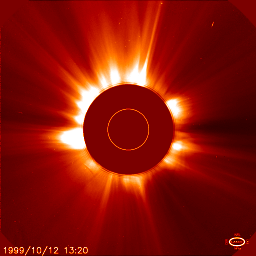 |
 |
 |
 |
 |
 |
 |
 |
 |
 |
In lieu of a sit-down final exam, there will be a project or term paper that will enable you to explore a chosen topic in a bit more detail, and gain some extra experience scientific/technical writing. This page goes a bit beyond the syllabus to give some additional detail about this assignment.
There are several paths you could take:
- Review Paper: This is a a written review of a topic relevant to the course, that goes significantly beyond the material discussed in class. The paper must convey some background (i.e., how did we come to understand the topic), motivation (i.e., why is it relevant), and some quantitative exploration of the physics (i.e., showing some relevant equations and describing how they are solved).
The length to aim for is about 10 to 12 double-spaced pages -- i.e., about 2500 to 3000 words -- not counting snazzy figures (recommended) and a bibliography of cited sources (required). When researching your topic, please use multiple sources (not just the lecture notes and handouts, and definitely not Wikipedia!) to get a broad, but also detailed, view of the science.
- Computational Project: If you have an idea to do some kind of mathematical or computational calculation that explores a topic relevant to the course, please let your instructor know about it. You may want to construct your own model or simulation, or even download some publicly available data to analyze. You would still need to write a paper describing what you did, but it can be filled mainly with the results and not as much "deep background" as in option 1. Feel free to use whatever tools you want (i.e., computing languages, software packages, output formats). (Instructor approval is needed.)
- Public Outreach Project: If you have an idea for a unique bit of public outreach (i.e., a video, animation, game, or art project) that would get the general public engaged about the importance of solar and space physics, please let your instructor know about it. If this ends up being a "live event" (i.e., you giving a talk to the public), you should record the event on video. As above, you would still need to write a paper describing your motivations, thought processes, and source material, but it can be short (4 to 5 pages) if submitted simultaneously with the main product or recording. (Instructor approval is needed.)
SUGGESTED TOPICS:
Please submit initial ideas for your project topics (either via email or in-person discussion with your instructor) by Monday, March 13, 2017. These ideas are not set in stone, and maybe your instructor will have some useful suggestions. However, getting this initial idea submitted is important so it's not left to the last minute.
The following topics are just suggestions, so please feel free to choose something else. Some of these topics were taken (with some slight changes) from final projects submitted in the Spring 2015 offering of this class. For other ideas, see the reading material, or come talk to your instructor.
- Instead of the "constant density" toy model of a star we used in class, sometimes astronomers use a slightly more sophisticated description called polytropes.
- We talked briefly about the Virial Theorem, but it's used for so much else besides simple spherical stars.
- Do we really know the abundance of every element in the Sun? Early in the course we briefly mentioned a recent Solar Oxygen Crisis.
- Photospheres: how can measurements of "limb darkening" be used to constrain the depth dependence of temperature?
- Three billion years ago, the Sun was less luminous than it was now, and the Earth should have been frozen. Geologists say it wasn't, though. This Faint Young Sun Problem is still unsolved.
- We have observations of sunspots going back to the 1600s. What information can you extract from these records?
- Zeeman splitting in the photosphere: what does it tell us about the Sun's magnetic field?
- Coronal heating: what can we learn from filter-band images taken at EUV and X-ray wavelengths?
- Total eclipses: what does the visible-light emission seen "above the limb" during an eclipse tell us about the electron density of the corona?
- Over on east campus, LASP builds spacecraft that explore the plasma in the Earth's magnetosphere and the solar wind. If you pick a mission (or just one instrument on that mission), can you sift through the papers and press releases to figure out how the new data modifies our knowledge about the Sun and nearby space?
- There have been some super-powered solar storms in the past, such as the 1859 Carrington Event, or a 1967 storm that almost led to nuclear war, or the Halloween 2003 storms. What would an event like that do if it happened today?
DEADLINE AND LATENESS:
Submit all files BY EMAIL to your instructor (steven.cranmer@colorado.edu) by the deadline of Friday, May 5, 2017. Redundant paper submission is okay, but the electronic version is required/primary. Please use PDF format for written material and figures. If you have other data to submit in multiple files, please (a) try to let me know beforehand, and (b) use tar or zip to combine them into a single file.
Because this is due at the end of the semester, and grades must be submitted very soon after finals week, there cannot be much leeway with regard to lateness. Your instructor is going to need the week of May 8-12 to grade these. Thus, the lateness penalties are:
- Friday, May 5: no penalty
- Monday, May 8: 20% grade reduction
- Tuesday, May 9: 30% grade reduction
- Wednesday, May 10: absolute last day; 50% grade reduction
This assignment is worth 20% of your final grade for the course, so it's to your benefit to submit it on time.
Obligatory boilerplate (repeated from Homework 4):
As you already know from the syllabus, the CU Boulder academic integrity policy needs to be obeyed at all times, and this includes plagiarism. Some other local online guides that go into more detail about plagiarism include those at CU Denver and Colorado State. It's definitely not worth the risk to your academic career to go down that road.